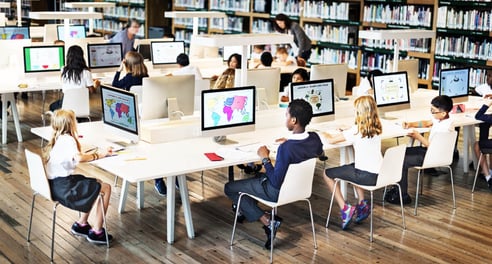Is your use of technology in the classroom superficial?
As we enter a new decade, the term “digital classroom” is now commonplace; more often than not, districts have adopted technology initiatives, putting devices in the hands of every student with the goal of shifting instruction in the classroom.
But, just because students have devices, doesn’t mean the learning is better. When converting to digital classrooms, districts should understand that these tools aren’t a substitute for textbooks or pen and paper. If students are simply filling in boxes and prompts using technology from instruction created by the teacher, then it’s not quite the transformation that should be taking place. In this aspect, the device is used superficially.

However, if students are utilizing these devices to create the content, collaborate with their peers, and share insight, then the digital conversion becomes student-centric, and the metamorphosis happens. Now, the classroom is one in which devices transcend the learning, not replace it. By using apps that promote questioning, allow students to generate and share ideas, and challenge their peers to also think critically, then a new environment emerges: learning truly transforms and a digital “conversion” happens.
Once a classroom is digitally converted, students work alongside their teacher and each other to create content that fosters social learning in the classroom. They take ownership, knowing that what they create will be used to drive instruction and deepen understanding. When this happens, the district’s “digital conversion” grows exponentially into a conversion not only from textbooks and paper to devices, but one that shifts learning, teaching, collaboration, and engagement, as well.


.png)

